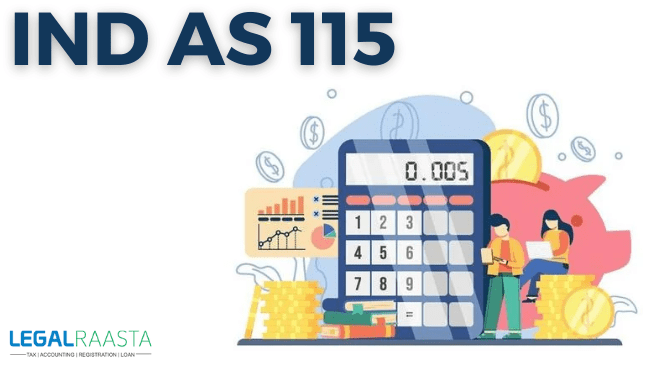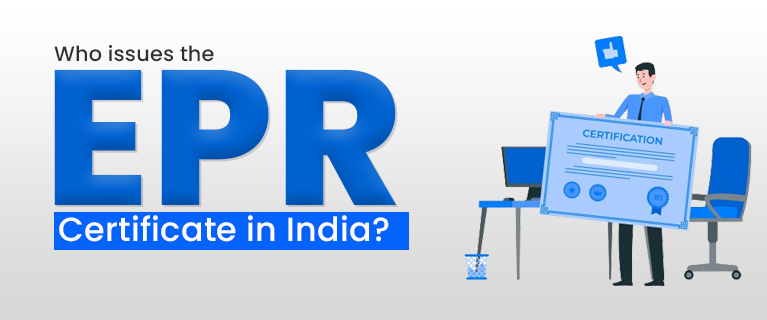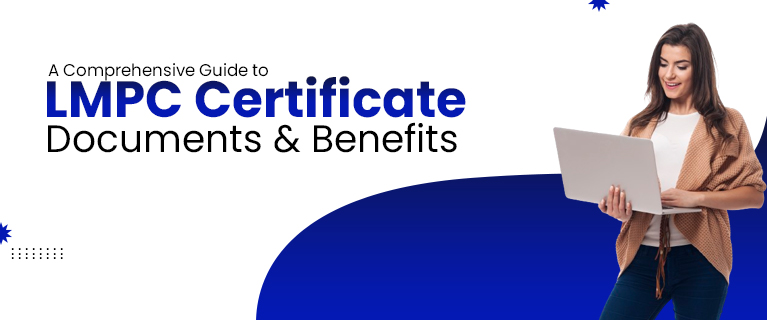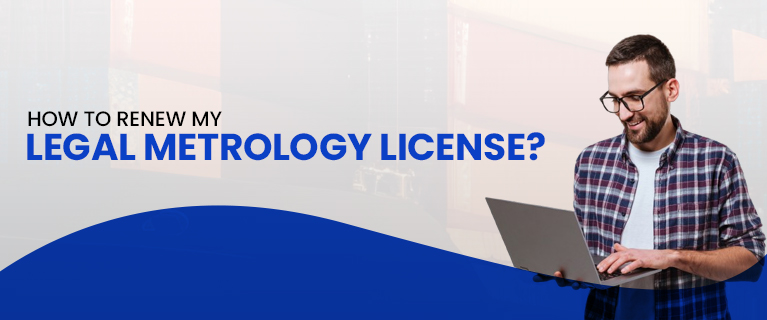Ind AS 115 : Revenue From Contracts With Customers
Recognition of revenue is the most essential accounting policy which can directly impact the company’s financial performance. Ind AS 115 lays down rules and new requirements for recognition of revenue which can be new or can be different from the already existing revenue recognition standards provided
Ind AS 115 Revenue from contracts with customers deals with the recognition of revenue from a contract with a customer for transfer of products and services. The effect isn't just with regards to the circumstance and amount of revenue acknowledgment, yet additionally the critical and extended presentation and revelation necessities. Successfully Ind AS 115 has done away with the “transfer of risk and reward" approach for perceiving revenue and has presented a new, five-stage, revenue acknowledgment model.
Background :
Ministry of Corporate Affairs on February 16, 2015, notified the Company ( Indian Accounting Standard Rules), 2015. The notification lays down various standards which are commonly known as Ind AS along with the applicability of those standards to various companies. The standards are in line with international
financial reporting standards which are commonly known as IFRS.
Objective
The main principle is that an entity shall recognize the revenue for depicting the transfer of promised goods and services to customers in exchange for consideration that the entity is entitled to due to the exchange of goods and services and also reporting useful information about the amount, nature, timing and cash flows arising from a contract with a customer.
This standard lays down the accounting for an individual contract with a customer. However, an entity may apply this standard to a portfolio of contracts that possess similar characteristics if the entity expects that the financial statements of a portfolio of contracts would not differ from that of individual contracts.
Scope
This standard is applicable to all contracts. However, there are certain exceptions to it.
The exceptions are as follows:
- Lease contracts that are within the scope of Ind AS 17
- Insurance contracts that are within the scope of Ind As 104
- Financial instruments and other contractual rights or obligations which are within the scope of Ind As 109, financial instruments, Ind As 110, consolidated financial statements Ind As 111, joint arrangements Ind As 27, separate financial statements Ind As 28, investments in joint ventures
- The non-monetary exchange between entities in the same line of business facilitates sales to customers. For example contract between two oil companies who agree for oil exchange to fulfill demand from their customers in different locations on a timely basis.
The standard will be applicable only if the counterparty is a customer. A customer is a party that has contracted with the entity to obtain goods and services in exchange for consideration.
Five-step model
The new revenue recognition model formulated by Ind AS 115 lays down five steps.
The steps are as follows :
- Identifying contracts with customers
- Identifying performance obligations separately in the contract
- Determining the transaction price
- Allocating the transaction price to separate performance obligations
- When each performance obligation is satisfied then recognizing the revenue
-
Identifying contracts with customers
An entity can only recognize a contract that is within the ambit of the standard only if it complies with the
following criteria:
- The parties involved in the contract have approved the contract in writing or orally and are dedicated to performing their obligation
- The entity can recognize the rights of the party involved regarding goods and services which are to be transferred
- The entity can recognize the terms of the payment of goods and services which are to be transferred.
- The entity will also take the consideration to which it is entitled to the exchange of goods and services which will be transferred to the customers.
Points to keep in mind while applying for recognition criteria
- -The Standard will keep on being applied till the contract is in force and the parties to the contract have present enforceable rights and obligations.
- A contract doesn't exist if each party to the contract has the one-sided enforceable right to end an entirely unperformed contract without remunerating the other party (or parties ). A contract is entirely unperformed if both of the accompanying standards are met: a) the entity has not yet transferred any guaranteed goods and services to the customer; and
b) the entity has not yet gotten and isn't yet qualified to forget, any consideration in return for promised goods and services.
- Business substance exists if the exchange is sponsored by a considerable business purpose and executed in an efficient way.
- Once evaluated at the contract beginning, an entity will not rethink the acknowledgment measures except if there means that a huge change in facts and circumstances.
Consideration treatment when received during pendency of recognition criteria
At the point when a contract with a customer doesn't meet the acknowledgment criteria and an entity gets consideration from the customer, the entity will perceive the consideration got as revenue only when
both of the accompanying occasions have happened:
a) the entity has no excess obligations to move goods and services to the customer and all, or significantly all, of the consideration guaranteed by the customer has been received by the entity and is non-refundable; or
b) the contract has been ended and the consideration got from the customer is non-refundable.
The entity will perceive the consideration got as a liability until one of the above occasions happen or until the acknowledgment measures are along these lines met
-
Identifying performance obligations separately in the contract
Satisfaction of performance obligation which is an identified obligation is a must for recognition of revenue. Under Ind AS 115 revenue recognition happens at the individual performance obligation. At the time of inception of the contract, an entity should assess goods and services that are promised in a contract with a customer and will recognize as a performance obligation each promise of transferring to customers either goods or services that are different or series of different goods and services that are substantially the same and have the same transfer pattern.
A good or service that is guaranteed to a customer is distinct if both of the accompanying rules are met:
a) the customer can benefit from goods or service either all alone or along with different sources that are promptly accessible to the customer (for example the good or service is fit for being distinct ); and
b) the entity's promise to move the good or s tly recognizable from different promises in the contract (for example good or service is particular inside the setting of the contract).
A series of different goods and services have a similar example of transfer to the customer if both of the accompanying measures are met:
a) each particular good or service in the series that the entity promise to transfer to the customer would meet the rules to be a performance obligation fulfilled after some time; (As portrayed in Point E, of the five-stage model) and
b) the same strategy would be utilized to gauge the entity's advancement towards complete fulfillment of the performance obligation to move each distinct good or service in the series to the customer. (As depicted in Point E, of the five-stage model)
Performance obligation should not only be restricted to goods and services that are mentioned in the contract.
-
Determining the price of the transaction
An entity will consider the particulars of the agreement and its standard strategic approaches to decide the transaction price. The transaction price bars sums gathered on behalf of third parties (for instance, goods and services tax or sales tax, etc.) The consideration guaranteed in a contract might incorporate a fixed amount, a variable amount, or both.
While deciding the transaction price, an entity shall consider thinking about the impacts of the entirety of the following:
- variable consideration ;
- the presence of a huge financing component in the contract ;
- non-cash consideration; and
- the consideration payable to a client
Variable consideration
On the off chance that the consideration guaranteed in a contract incorporates a variable sum, an entity will gauge the measure of consideration to which the entity will be entitled in exchange for transferring promised goods and services to the customer.
> Variable consideration can be unequivocal in a contract or suggested by an entity's previous strategic approaches. Occurrences that make consideration be variable incorporates I) rate distinction, ii) amount limits, iii) performance rewards, iv) motivating forces/commission, v) claims, vi) liquidated damages, and so forth.
The presence of a huge financing component in the contract
Exchanges frequently remember terms for the idea of financing, either the customer or the entity, which requires separate accounting considering about time value of cash. At the point when the credit time period presented to the customer is higher than typical industry practice, the entity is adequately providing finance to the customer. On the other hand, if there should arise an occurrence of settlement ahead of time by the customer, the entity has adequately gotten finance.
The standard requires that in deciding the transaction value, an entity will change the guaranteed measure of consideration for the impacts of the time value of cash in case there is a huge advantage to one or the other party.
Non-cash consideration
Consideration might be in the form of goods and services, or other non-cash considerations (e.g., property, plant and gear, or a monetary instrument). In the case of contracts that involve consideration other than cash, such noncash consideration shall be estimated at fair value.
The consideration payable to a client
The consideration payable to a customer incorporates cash sums that an entity pays, or hopes to pay, to the customer (or to third parties who purchase the entity’s services or goods from the customer.). The consideration payable to a customer likewise incorporates credit or different things (for instance, a coupon or voucher) that can be applied against sums owed to the entity.
-
Allocating the price of the transaction to the separate performance obligations
As expressed before, Ind AS 115 prescribes revenue recognition at every performance obligation level, as against at the transaction/contract level. In this manner, the transaction cost in a plan is needed to be distributed to each different performance obligation to such an extent that the assigned sum portrays the measure of consideration to which the entity is expected to be entitled, at every performance obligation level, in exchange for the transfer of the goods and services which are promised to the customer.
-
When each performance obligation is satisfied then recognizing the revenue
Under Ind AS 115, an entity recognizes revenue when it fulfills an identified performance obligation by transferring a promised good or service to a customer. A good or service is viewed as transferred when the Customer acquires control of it.
> An entity will decide at contract initiation whether it fulfills the performance obligation after some time or fulfills the performance obligation at a point on the schedule. In the event that an entity doesn't fulfill a performance obligation after some time, the performance obligation is fulfilled at a point on the schedule.
Summary
Execution of new revenue recognition standard is a welcome move considering the combination of revenue recognition strategy with that worldwide acknowledged IFRS 15. Anyway, Ind AS 115 varies significantly when contrasted with existing accounting standards for revenue recognition. The distinctions could bring about changes in the identification of performance obligations, the timing of revenue recognition, measurement of transaction cost, and disclosures. Progress to a new revenue recognition standard isn't just an accounting change yet resembles to essentially affect the entity's information, data, and systems. Change to a new revenue recognition system is relied upon to have a critical effect across areas particularly in retail and consumer products, engineering and constructions, real estate, software and cloud entities, telecom, etc. However the standard has recommended different useful catalysts, organizations would confront part of difficulties to introduce their quarterly as well as yearly outcomes considering the broad accounting changes and restricted opportunity to progress.
Also Read,
Section 269ST of Income Tax Act
Tax avoidance is lawful; Tax avoidance is criminal










